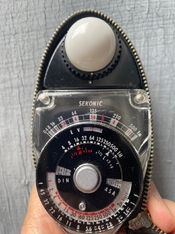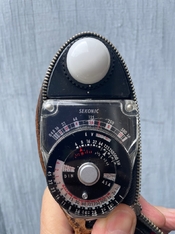BrianShaw
Member
Camera, right in the middle of the level curve. Digital Sekonic is not too far of, Old Sekonic is 1/3 EV darker.
Pentax Digital Spotmeter which I thought would be the most accurate is 1 EV darker, which is now a bigger problem for me.
Earlier there were hints alluding to apples versus oranges comparisons based on meter differences. Perhaps that is especially true with the Pentax Spot Meter at close distances. A 1-degree spot at close range is very small; much smaller than a general-coverage meter and might be more sensitive to surface irregularities and the like. Before giving up on it why not test the spot meter at “normal” distances and see if it still appears to read wrong?
And I’m sure that you have checked this but asking anyway… the Pentax is set to 200 like the other meters, right?













